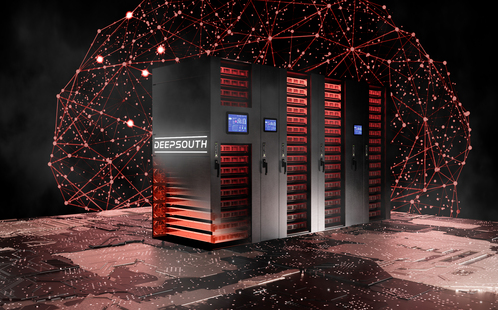For something we’re all just toting around without a second thought, the human brain has some very impressive capabilities. So impressive, in fact, that even the most sophisticated computers cannot yet replicate all its functions. But that could be about to change. Scientists at Western Sydney University just unveiled their new supercomputer DeepSouth, the first that will be capable of simulating a full-scale human brain.
When it’s operational, DeepSouth will be capable of performing a staggering 228 trillion synaptic operations per second. This is comparable to the level of activity across all the many interconnected neurons within the brain, and it’s all thanks to its innovative neuromorphic design.
“Progress in our understanding of how brains compute using neurons is hampered by our inability to simulate brain like networks at scale,” said Professor André van Schaik, director of the International Centre for Neuromorphic Systems (ICNS) at Western Sydney, in a statement. “Simulating spiking neural networks on standard computers using Graphics Processing Units (GPUs) and multicore Central Processing Units (CPUs) is just too slow and power intensive. Our system will change that.”
The brain is a highly energy-efficient system, and scientists have so far struggled to replicate this efficiency in a synthetic computer. Oak Ridge National Laboratory’s Frontier supercomputer, considered by many to be the fastest computer in the world at present, requires 22.7 megawatts to run, as Domenico Vicinanza, Associate Professor of Intelligent Systems and Data Science at Anglia Ruskin University, explained for The Conversation.
The human brain, by contrast, can operate at the same speed – a billion-billion calculations per second, also known as an exaflop – with just 20 watts.
DeepSouth will therefore allow researchers to explore computing in a less power-hungry way.

A concept image of DeepSouth.
Image credit: ICNS/Western Sydney University
The neuromorphic design is also fundamentally distinct from that of traditional electronic computers, which has remained basically unchanged for many decades. Up to now, computers have been characterized by separate processing and memory units – data is stored in one place, and manipulated in another.
While we may still have much to learn about how memory works in the human brain, we’re pretty sure that it doesn’t work quite like this, so scientists are looking to the computers inside our heads for inspiration as they design the machines of the future.
DeepSouth’s neuromorphic circuitry is based on networks of simple processors that can all work in parallel. It mimics the way different neurons in the brain, connected via synapses, can fire simultaneously. The system will be scalable and easily reprogrammable from the front end using the popular Python programming language, meaning that researchers will be able to make use of the technology without an intimate understanding of the hardware itself.
But exactly what kinds of applications could we be talking about?
“This platform will progress our understanding of the brain and develop brain-scale computing applications in diverse fields including sensing, biomedical, robotics, space, and large-scale AI applications,” Professor van Schaik explained, going on to list advanced smart devices, agricultural sensors, and more efficient artificial intelligence (AI) platforms as just some of the possibilities.
Speaking to New Scientist, Ralph Etienne-Cummings of Johns Hopkins University, who is not directly involved in the DeepSouth project, also suggested how the supercomputer could benefit research like his own – after three decades of research in the fields of mobile robotics and legged locomotion, he has latterly made great strides in the world of neuroprostheses and brain-computer interfaces.
“If you are trying to understand the brain this will be the hardware to do it on,” he said.
DeepSouth – whose name is a nod to its location in Sydney, Australia as well as a homage to two doyens of the supercomputing world, IBM’s Deep Blue and TrueNorth – will hopefully go online in April 2024. Until then, we’ll have to wait to find out just what science will be able to achieve by packing all the power of a human brain into a supercomputer.
Source Link: Coming Soon: First-Ever Supercomputer To Match The Human Brain’s 228 Trillion Operations Per Second